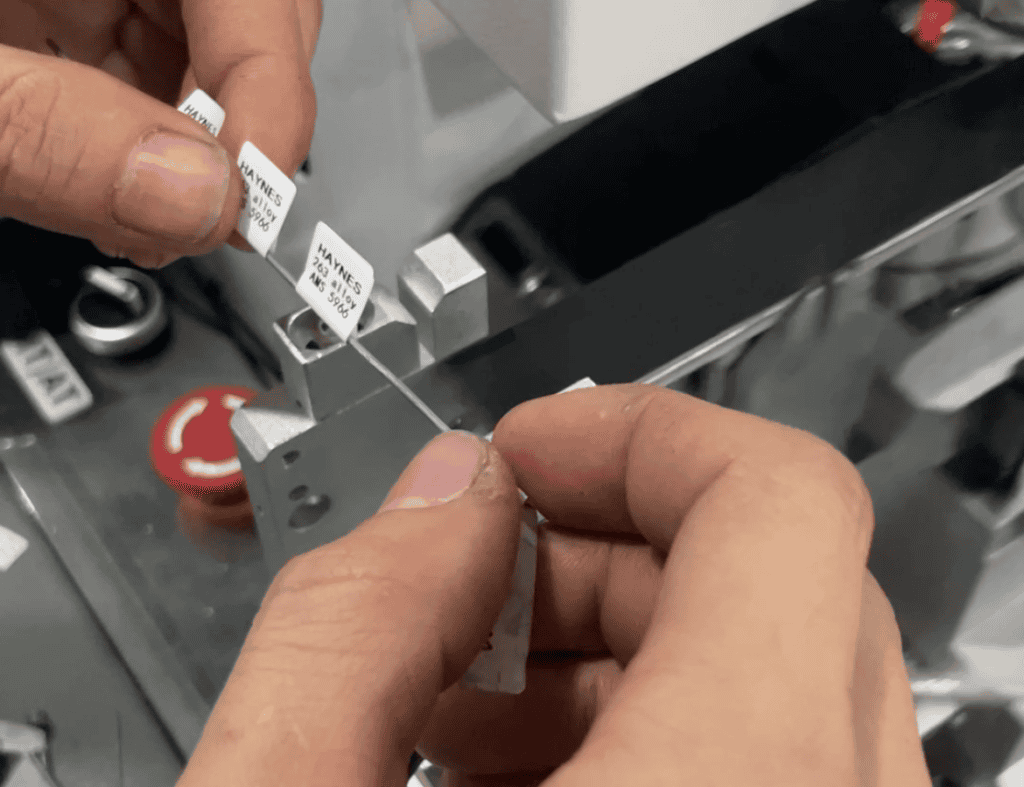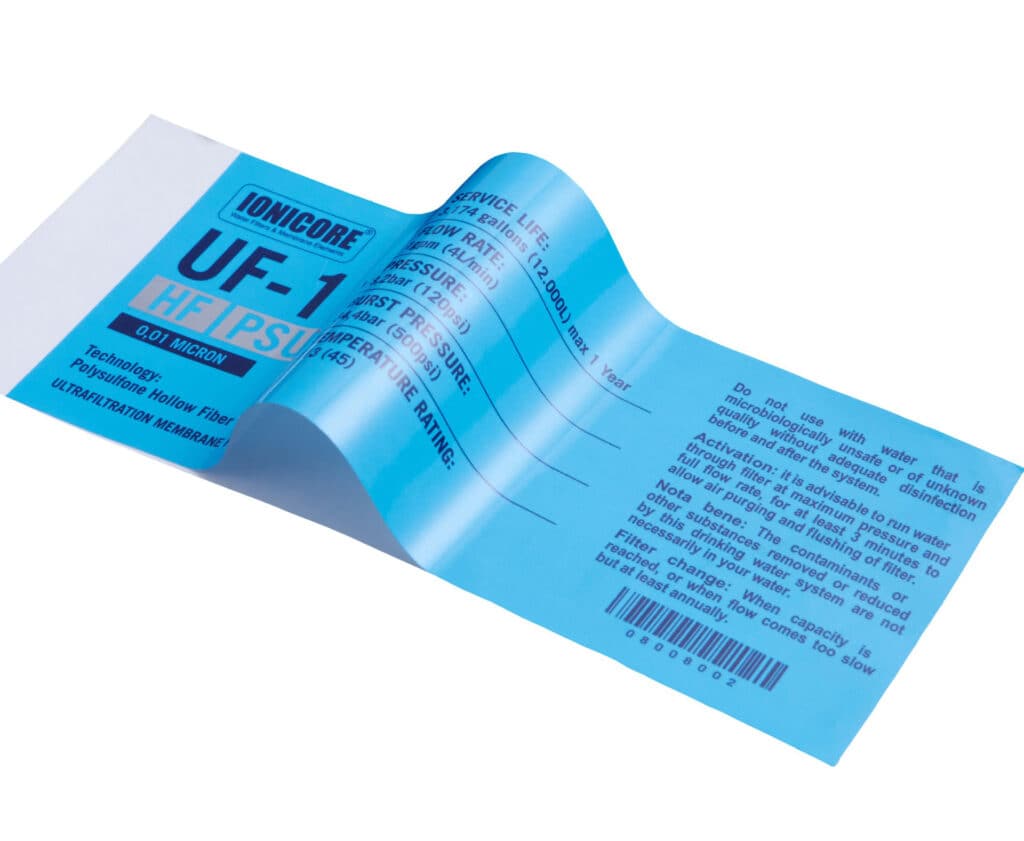Efficient and accurate labeling of instrument cables is crucial for anyone involved in music production, live performances, or audio engineering. This process involves identifying each cable based on its function, destination, or signal type, and then applying a durable, easily readable label that withstands handling and environmental conditions.
With the right approach and tools, labeling instrument cables can be a straightforward task that pays dividends in terms of time saved and reduced frustration during setups and breakdowns. Let’s delve into the specifics of how to achieve this with professionalism and precision.

What is a Labeling Machine?
A labeling machine is an essential tool for applying labels to various products, including instrument cables. These devices are designed to streamline the labeling process, ensuring that labels are applied quickly, consistently, and accurately. Labeling machines can vary widely in terms of complexity and functionality, from simple handheld devices to complex automated systems that integrate with manufacturing lines.
The primary advantage of using a labeling machine is its ability to apply labels in a precise manner, enhancing the readability and durability of the label. This is particularly important for instrument cables, where a poorly applied label can lead to confusion or even damage if it obscures important cable characteristics or interferes with connections. By ensuring that labels are neatly applied and firmly adhered, a labeling machine significantly improves the organization and efficiency of cable management tasks.
What is a Wire Labeling Machine?
Instrument cables, characterized by their round shape, necessitate a specialized type of labeling machine known as a wire labeling machine. These machines are engineered to handle the unique challenges posed by labeling round cables, accommodating various diameters and ensuring that labels are securely wrapped around the cable’s circumference without slipping or misaligning.
The design of wire labeling machines typically allows for adjustment to accommodate a range of cable diameters, usually between 3mm to 10mm, with the option for customization for sizes falling outside of this range. This adaptability is crucial for audio and music professionals who work with a diverse array of cable types and sizes, enabling them to label their equipment with precision and consistency.

How to Label Instrument Cables?
Labeling instrument cables effectively requires a thoughtful approach, starting with determining the cable’s diameter to select the appropriate labeling mechanism. For cables within the conventional diameter range of 3 to 10mm, standard labeling machines are typically sufficient, while cables with unique diameters may require custom solutions.
Once the correct labeling mechanism is selected, the next step involves preparing the label and installing it onto the equipment. This stage is critical, as it involves debugging and adjustments to ensure that the label is applied neatly and accurately.
Misalignment or sloppy application not only detracts from the label’s appearance but can also impede readability, making it essential to achieve precise alignment. For situations where precision is less critical, the focus should be on ensuring that the label adheres securely to the cable, without necessitating further adjustments.

The Importance of the Label
In the context of labeling instrument cables, the label itself plays a pivotal role as a consumable element that needs careful selection. Its size, material, color, and adhesive properties must be tailored to the specific application, taking into account the surface to which it will be applied and the environmental conditions it will face.
Choosing the right adhesive is particularly crucial, as it determines the label’s ability to stay affixed to the cable over time. This choice depends on the cable’s material, the conditions it will be exposed to, and the level of durability required. A well-chosen label ensures that vital information remains accessible and intact, enhancing the efficiency of cable management and setup processes.
How to Set What to Print on the Label?
Wire labeling machines offer the flexibility to configure what is printed on each label, allowing users to adapt to varying labeling needs. This capability is particularly valuable for businesses that require frequent changes in the information displayed on their labels, such as different signal paths or equipment identifiers.
For applications where the label content remains constant and demand is high, pre-printed labels produced by the manufacturer can offer a more efficient solution. By bypassing the need for onsite printing, pre-printed labels simplify the labeling process, allowing for quicker application without compromising on clarity or accuracy.

Are Cables of Different Straight Lines Compatible?
Labeling machines typically accommodate a range of cable diameters with specific settings for each size. However, many machines offer flexibility for labeling cables with similar diameters without requiring adjustments, simplifying the process for cables that fall within a close size range.
The decision to adjust machine settings for different diameters hinges on the precision required for the labeling task. For applications demanding high accuracy, custom settings for each cable size ensure optimal label application and alignment, while more general labeling tasks may benefit from the machine’s ability to handle a variety of cable sizes with minimal adjustments.
Do Cables Come Off Easily After Labeling?
The longevity and durability of a label on an instrument cable are largely influenced by the adhesive used. Different surfaces can significantly affect the adhesion strength, making it essential to choose the right type of glue based on the cable’s material and the environment it will be used in.
Understanding the specific requirements for each labeling application allows for the selection of an adhesive that ensures labels remain firmly attached, maintaining legibility and durability even under challenging conditions. This careful consideration of adhesion properties is key to achieving reliable, long-lasting labeling results.

Conclusion
Effective labeling of instrument cables is a critical aspect of managing audio equipment, contributing to improved efficiency, accuracy, and reliability in setups and operations. By selecting the appropriate labeling equipment, materials, and techniques, professionals can ensure that their cables are organized and easily identifiable, streamlining their workflows and preventing common issues associated with mismanaged cabling. Through careful consideration of each step in the labeling process, from machine selection to adhesive choice, users can achieve professional-grade results that stand up to the demands of the music and audio industries.
You may be interested:
- What is the instrument used for Labelling?
- Top 10 Things You Should Know About Industrial Wire Labeling Machines
- Can the Power Supply Voltage of the Wire Labeling Machine Be Changed?
- What Do You Need to Do After You Receive Your Wire Labeling Machine?






